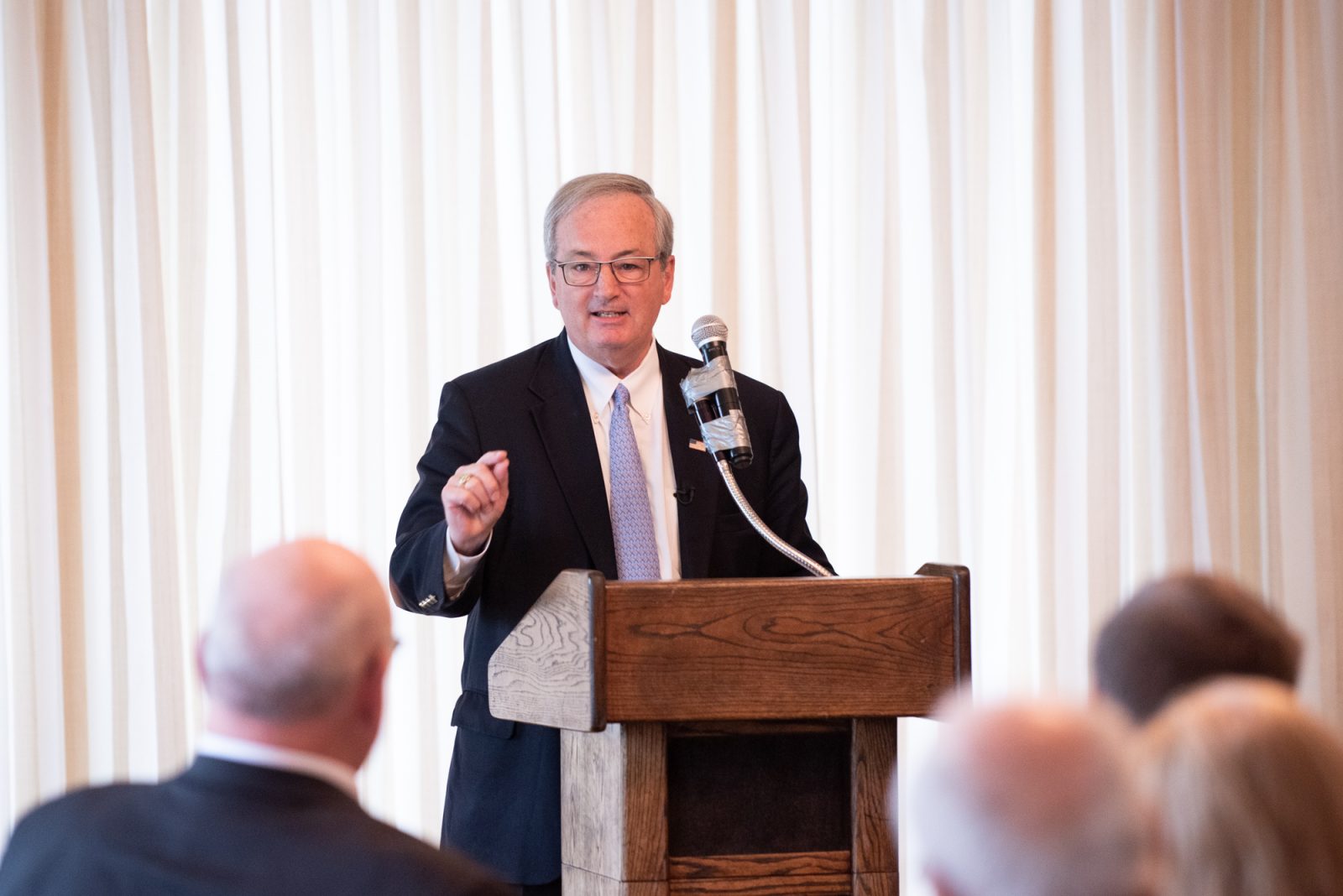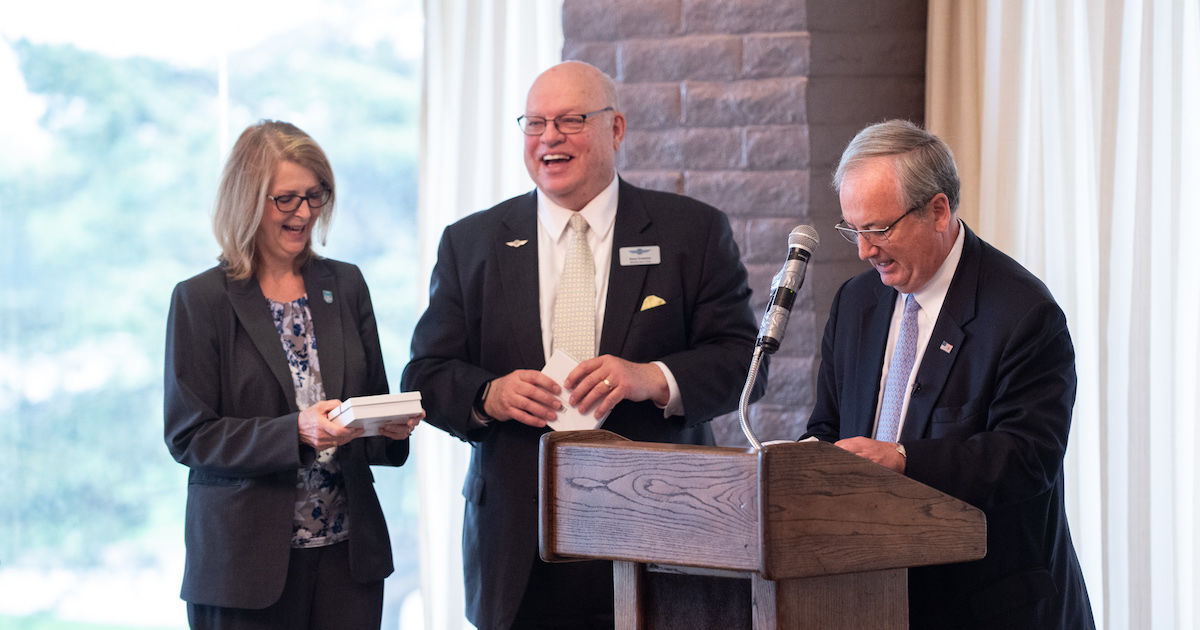Keep the Sky from Falling
05.02.19 · Ashley Bowen Cook
Valerie Wise with the Eisenhower National Airport introduced the April 30 Wichita Aero Club speaker, but the presenter had a message broader than commercial aviation. It applies to business and general aviation as well. And it isn’t good.

Aviation Workforce Alliance Executive Director David Olive addressed the critical shortage of not just pilots but also qualified aircraft technicians, those holding airframe and powerplant ratings, A&Ps. We don’t have enough workers in the pipeline to fill demand. The shortage is felt today and will become increasingly acute. It affects everything from passenger safety to jobs and the economy.

In Kansas, not finding enough pilots to fill the demand could result in the state losing one third of its commercial airline service, Olive said. We can’t let that happen.
Numbers Tell the Story
The Federal Aviation Administration reports there were more than 827,000 civil pilots in 1987, but only 633,000 in 2018. What’s led to the pilot shortage? The list is long. A forced retirement at age 65 for U.S. commercial pilots. Explosive growth in other parts of the world, particularly East Asia. Foreign carriers lure away qualified pilots. International students pack flight schools. (Olive said 90% of students at one flight school he visited recently were from China.)
The military has issues, too, as it struggles to recruit and retain pilots. Last year the U.S. Government Accountability Office reported a 25% shortfall of crucial fighter pilots for the Air Force, Navy and Marine Corps. This shortage translates to the traditional military-to-airline pipeline. There are fewer pilots entering it. Plus, incentives are weakened. Low wages at some regional airlines, the starting place for most airline pilots, can result in a pay cut for pilots leaving the military. “Salaries have gone up,” Olive said, “but it’s not been enough.”
Let’s Reverse These Trends
No silver bullet exists, but there are things we can and should do to address this crucial issue. Here are some Olive mentioned.
- Lower financial barriers.
- Focus on proficiency rather than hours flown.
- Make lifestyle changes to keep business pilots.
- Use the best available training technology and methods.
- Start building the pipeline by supporting STEM programs.
- Increase the number of pathways to earn required flight hours.
In early March, Boeing established a $3 million endowment for scholarships at Embry-Riddle Aeronautical University for students pursuing pilot’s licenses and aviation maintenance certificates. It’s going to take this kind of support to reverse our current course. Let’s resolve to fix this.
This article also ran in the May 16, 2019, issue of BlueSky Business Aviation News.
All photos courtesy of Visual Media Group.
